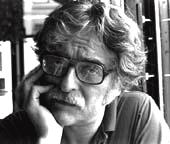Bill Pierce
Nuts & Bolts
Motorized Moments
|

|
This
month's assignment is to write about news magazines. Is Dirck kidding?
People get their general news from newspapers, television and the web.
Somewhere along the way the large, national newsmagazines became relatively
unimportant. The magazines blame television; yet, they have competed
with them by providing just as much brainless coverage of showbiz and
starlets and soft news while failing to provide anything unique in terms
of hard news coverage. The exception to that in the United States is
The Economist, a magazine with limited circulation and and less
news photography than you would find in one issue of The New York
Times.
Times change. The day when people waited anxiously for their copy of
Time, Newsweek or U.S. News to find out "what was
really happening" are over. These magazines never successfully
redefined themselves in a changing world to provide something that was
uniquely theirs. It's a little unnerving to go to a newsstand packed
with specialty magazines and see the diminished, sometimes almost nonexistent,
presence of the weekly newsmagazines.
So, let's not talk about them. Let's talk about something that really
advances photography - or at least film - motorized cameras.
It's hard to think of a day when most cameras used by photojournalists
were not motorized. Of course, it's difficult to motorize a 4x5 Speed
Graphic. But I actually saw a motorized sheet film holder. Portability
made Grafmatic holders and film packs more practical even if they depended
upon a human motor.
35mm cameras didn't even have thumb winds, although the now deceased
Professional Camera Repair made a little ratcheting bar that attached
to a wind knob and let you turn it more rapidly with your forefinger.
If you wanted a real motor you had to buy a Robot or a Hulcher, cameras
that were designed with remote work and sports more in mind than a fleeting
expression in a portrait.
However, as 35mm cameras became more and more the mainstay of photojournalism,
more and more motors appeared for these cameras. If the thumb wind and
Tri-X were the obvious dawning of the new age of photojournalism, electric
motors were the sleepers. (I don't feel I should go so far as to say
"sleeping giants.") Norm Goldberg designed and built a motor
for the Leica, a camera which held a unique place in the evolution of
photojournalism. Eventually, this motor was sold by Leitz. The SLR manufacturers
had a tougher design job, but they produced motors also.
And, all of a sudden, photographers found that motors were useful for
other things besides sports and space launches.
As photojournalists, we are sketchers, not painters. We look at an event
and try to pick out that tiny moment that makes it special. When an
artist sketches a portrait, very quickly he has a basic likeness. Then
- a little change here, try a little change there - and after enough
changes, he happens on the one that turns it into a good portrait of
a specific person. Very quickly, we line up the basic shot. And then
we start clicking and hunting for that special moment. I am fascinated
by the motorized equipment that lets us do that more easily.
I use point-and-push cameras; they are all motorized. And, yes, I use
them professionally and know two other photographers who also use them
professionally. In the old days, nobody paid any attention to somebody
shooting with a 35mm camera. They were small and often thought of as
not a camera a professional would use. Today, the 35mm is bigger and
the wary subject more sophisticated. Thanks to a Minilux and a Contax
T3, I can be thought of as unprofessional jerk not worthy of the subject's
attention or hostility. Thanks to the motors I have a better chance
of succeeding as a professional jerk.
My Hasselblads have motors on them because I use them primarally for
portraits and am trying to catch that fleeting moment where the portrait
is a little more interesting than a passport shot.
66.6% of my 35mm cameras have motors. Of the ones that don't, 50% have
rapidwinders made by Tom Abrahams. There is no way with a thumb wind
that I can advance the film on a 35mm without pulling my eye away from
the viewfinder. And you will never make an interesting shot of a politician
if you take your eyes off of them for even a second. So, even if he
is not going to have two interesting expressions in rapid sequence,
I feel better photographing a politician with a motor.
The truth is, my thumb has grown weak and probably couldn't do the job
if it tried. In part, the weakening of the thumb has come about because
many of my cameras don't even have thumb winds, only motors. I can't
thumb wrestle any more, and I can barely hitchhike.
On the rare occassions when I am a painter, rather than a sketch artist,
I use a view camera - no motor. But I have to tell you, that is because
I don't know how to paint with oils or acrylic.
For me photojournalism is about the moment - or the motor - or both.
Bill
Pierce
Contributing Writer
bicpi@earthlink.net
|
